In Central Europe, a rare, centuries-old practice has influenced the language, dress and culture of several nations.
Wearing all-blue attire – blue jeans, blue vest, an indigo blue-and-white patterned shirt and a blue apron – Josef Koó opened the doors to his workshop, Original Blaudruck Koó, in Austria’s easternmost Burgenland state, a sparsely populated region known for its vast sky and lake landscapes along the Hungarian border.
A third-generation craftsman, Koó and his wife, Miriam, run one of Austria’s two remaining indigo blueprinting workshops. Once commonplace, this rare, centuries-old practice nearly disappeared, but is now experiencing a resurgence.
Called Blaudruck (“blueprint” or “blue-dyeing”) in Austria and Germany (and Kékfestés, Modrotlač and Modrotisk in Hungary, Slovakia and the Czech Republic, respectively, where it is also practiced), the name refers to the process of printing a dye-resist paste called Papp onto a cloth before dyeing over it with indigo. “Indigo is the most common and most powerful natural dye, used all over the world for thousands of years,” said Lisa Niedermayr, an Austrian textile artist who curated Unesco’s Walking The Indigo Walk exhibit in Paris in 2019.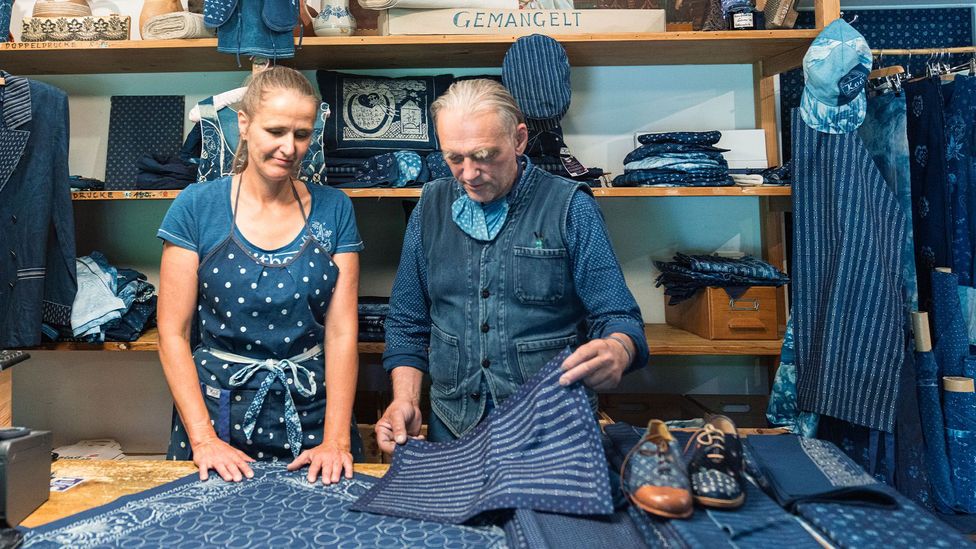
Josef and Miriam Koó run one of only two remaining indigo blueprinting workshops in Austria (Credit: Yulia Denisyuk)
People have been dyeing textiles with indigo for at least 6,000 years. In Germany and Austria, indigo dyeing developed into a distinct tradition that has shaped its language, dress and culture.
The European practice of dyeing textiles with blue goes back to the Bronze Age when woad, a locally grown plant, was used to dye clothes in present-day Austria. Traditionally, blue was a worker’s colour. But as Austrian artist and researcher Moira Zoitl explains in her book, According To Blueprint, Blaudruck took off in the 17th Century, when the Dutch East India Company started importing indigo powder from India. Indigo dyeing was done in cold water, which kept the dye-resist paste intact. As a result, it produced a deeper, more durable colour than woad.
These beautifully patterned textiles soon spread throughout Central Europe and became part of traditional costumes. According to Alfred Atteneder, director of Färbermuseum, a museum dedicated to Blaudruck in the Austrian town of Gutau, because tracht (traditional clothing) was frequently worn in Austria and Germany, “you will find a particularly large number of blueprint costumes here”.
As craftspeople travelled to learn this new Blaudruck block-printing technique and exchange designs and patterns, a community of practitioners formed. Much of the Blaudruck knowledge practiced today comes from the original family journals documenting these journeys. For Koó, this means working with fashion schools and young designers to revitalise the craft.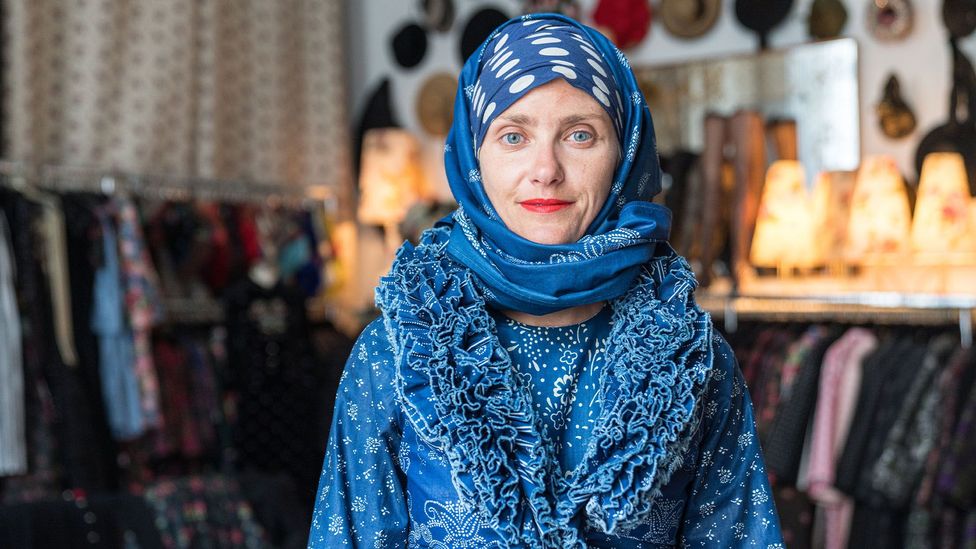
As the Blaudruck printing technique spread across Central Europe, it became part of traditional costumes (Credit: Yulia Denisyuk)
In the hilly Upper Austria region of Mühlviertel, the family-run Blaudruckerei Wagner workshop has been in business since 1878. Fourth generation Blaudruck craftsmen Maria and Karl Wagner explained that the intricate process of creating indigo-dyed textiles takes weeks from beginning to end. They first apply the pattern on the fabric with the help of the mint-hued, dye-resistant Papp paste, which is later dyed over with indigo. They then dye the cloth and the dye-resistant parts remain white, revealing locally inspired floral or geometric patterns – stripes were traditionally common in Burgenland, and regional cornflower and hops in Mühlviertel.
I watched as Maria’s son, Sebastian, applied Papp to a linen cloth using a centuries-old hand-crafted wooden block called Modeln with fine brass pins hammered into the block in the shape of a desired pattern. Only a few people in Europe still know how to produce these blocks.
The exact recipe for Papp has always been a closely guarded secret, passed down orally from generation to generation. Each Blaudruck workshop relies on their own mix of ingredients, but the two everyone is comfortable disclosing are gum arabic and clay. Once the patterns have been transferred onto the fabric, it has to air dry for at least four weeks to let the paste set in and harden. Then, it’s time to dye.
Stretching the linen onto a special frame called a Stern, Sebastian dipped it into a massive vat filled with cold water, indigo and lime. “It’s a science, but it’s also an art,” he said, dunking the linen into the vat multiple times. “Every linen reacts to the oxidisation process, during which the colours take shape differently. There are instruments to measure how strong the dye is, but our parents can do it by smell or touch of their fingers.” Finally, the dyed linen is washed in hot water to remove the dye-resist paste, revealing a striking dye-free pattern against the indigo blue.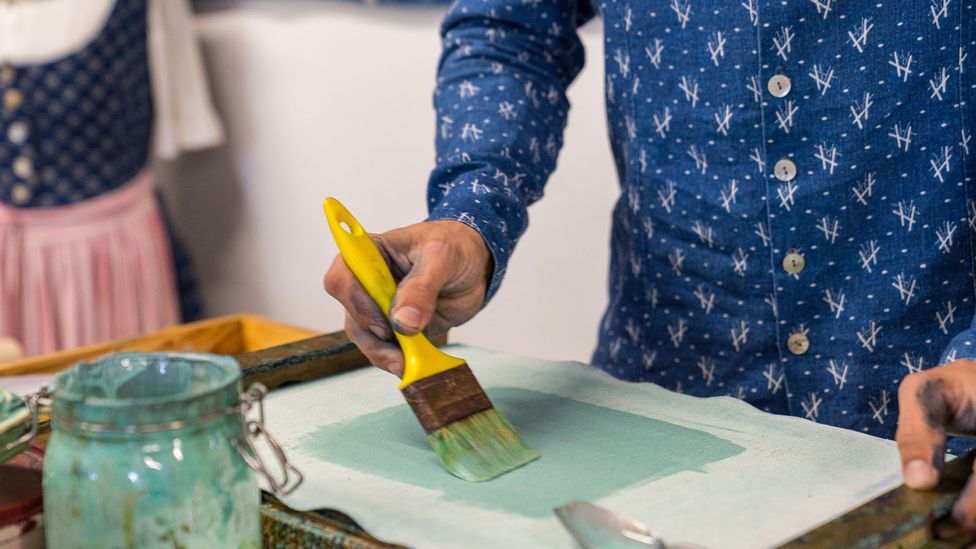
Craftsmen first apply the pattern onto the fabric with the help of the mint-hued, dye-resistant paste (Credit: Yulia Denisyuk)
Because of their durability, clothes made with Blaudruck were extremely popular and the craft spread throughout Germany and Austria like wildfire (Mühlviertel alone counted 17 workshops in 1832, according to the Wagners). The patterns never rubbed off. They were also practical: aprons with prints on both sides (a technique called Doppeldrucke) were versatile, with one side used in the kitchen and the other in the field, reducing the need for laundry. This made Blaudruck an easy choice for traditional dirndl dresses.
“I grew up with Blaudruck dirndls,” said Zoitl. “Blaudruck is an essential identity-establishing technique in this area.”
Blaudruck was so widespread that it influenced several German-language idioms. The common phrase “Du wirst Dein blaues Wunder erleben” (you will experience your blue miracle) is one example. According to Atteneder, this phrase developed in reference to the process of oxidisation. When the initially white textiles come out of the indigo vat, they turn yellow, then green and eventually blue. This is the miracle of indigo: it needs oxygen to turn blue and bond with the fabric. To this day, when Germans and Austrians want you to know you will be surprised by something, they use this phrase.
“Blaumachen“(to make blue) and “blauer Montag” (blue Monday) are two other examples traced to Blaudruck that are commonly used when someone is intent on skipping work. Traditionally, Monday was reserved for dyeing. Because textiles had to be dipped into indigo vats multiple times and left to dry in between each dip, artisans had idle hours on Mondays and they sometimes relaxed at a pub. When villagers would ask why the artisans weren’t working, the reply was: “I’m making blue today. It’s a blue Monday.”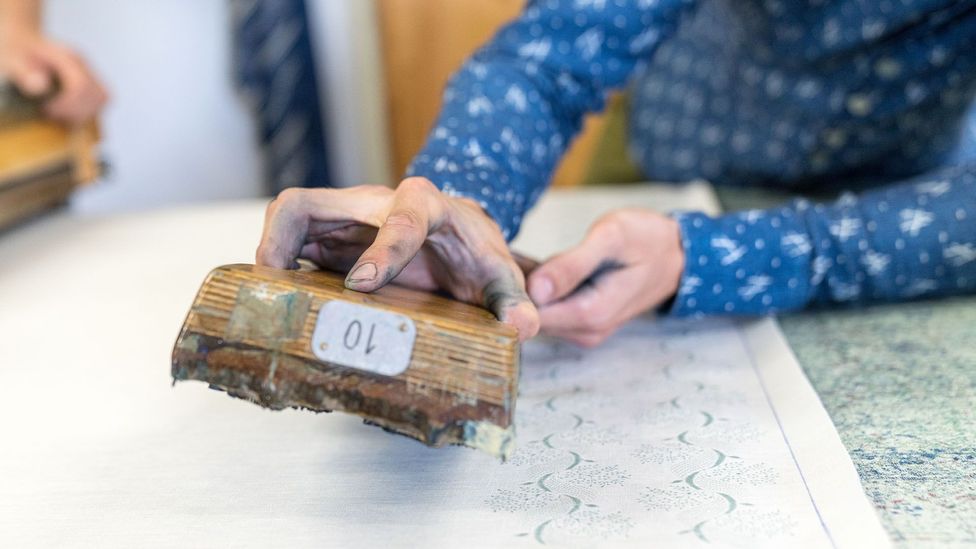
Only a few people in Europe still know how to make the wooden Modeln blocks used to make Blaudruck (Credit: Yulia Denisyuk)
Atteneder mentioned another phrase in the vernacular: “Jemanden in die Mangel nehmen” (take someone through the mangle), which means to trouble or pressure someone to do something you want. It refers to one of the last steps in the Blaudruck process, when the dried cloth is passed through a 12-ton granite mangle to smooth out the final fabric.
Because of its intense manual-labour process, Blaudruck has eluded industrialisation. By the 1980s, it was nearing extinction due to mass-produced textile alternatives. But in recent decades, a small community of indigo-obsessed artisans across Central Europe have revived this once-common cloth.
In 2018, Blaudruck was added to Unesco’s Representative List of the Intangible Cultural Heritage of Humanity. Travellers will see it adorning walls, pillowcases and tablecloths in Mühlviertel inns like Zum Edi and Färberwirt. Hotel Guglwald on the Austrian border with Czech Republic has a whole suite dedicated to Blaudruck. Germany’s Dillians store exclusively carries Blaudruck products, including wallets, purses and backpacks. The craft is also on display in exhibits in museums across Germany and Austria (Heimat Museum in Scheessel, Germany, even runs a virtual Blaudruck audio tour).
On the first Sunday in May, a sea of blue rushes into Gutau. Blaudruck practitioners, linen weavers, artisans and indigo aficionados from across Europe gather in the small Austrian town for the annual International Dyers’ Market, featuring blueprint crafts, jewellery and traditional costumes. On the agenda are guided Färbermuseum tours, a live fashion show and an opportunity to connect with representatives from the roughly 25 European Blaudruck makers.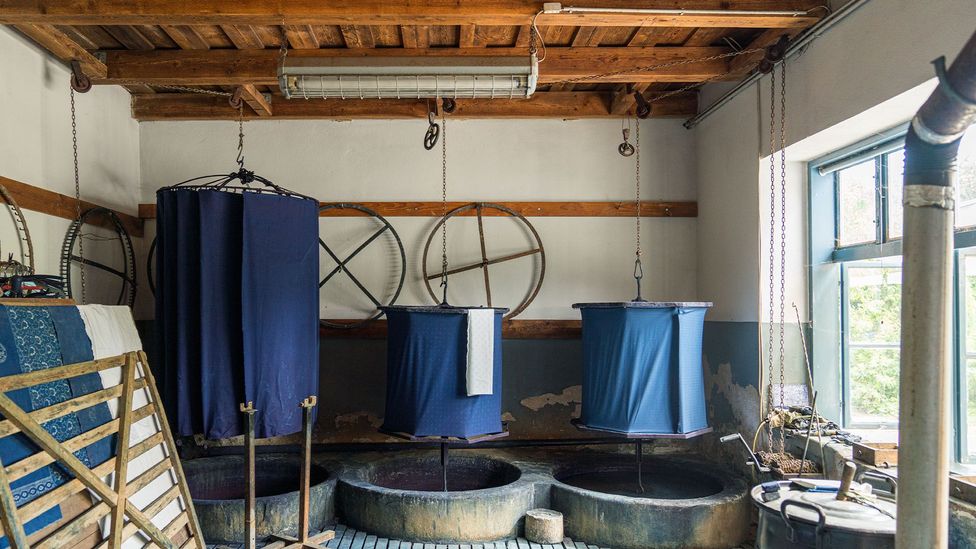
Blaudruck has inspired a number of common German expressions (Credit: Yulia Denisyuk)
Beyond the market, several experimental workshops allow visitors to try their hands at Blaudruck-making. Zeugfärberei in Gutau offers regular dyeing and printing workshops where guests can experiment with Blaudruck designs, screen printing and Shibori, a tie-dye technique from Japan. One of Europe’s oldest workshops, Einbecker Blaudruck, which has been in business since 1638 in Lower Saxony, runs guided workshops where guests can see more than 800 different Modeln blocks from various eras, including a few with biblical motifs.
“Indigo is like a bridge between different cultures. It’s beautiful and traditional, but it’s also global,” said Gexi Tostmann, whose company, Tostmann, is famous for its dirndls. “Blaudruck used to be a cheap cloth, for common people only. Now it’s expensive. Real handmade Blaudruck dress costs more than a silk one.”
But perhaps Koó puts it best. Hanging a freshly dyed cloth of the most intense deep blue shade to dry out in his workshop’s yard, he said, “We are not a museum. This is a living craft.”
Source : BBC















